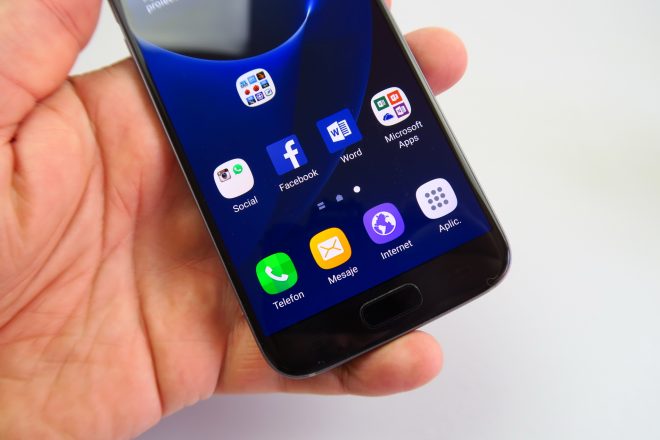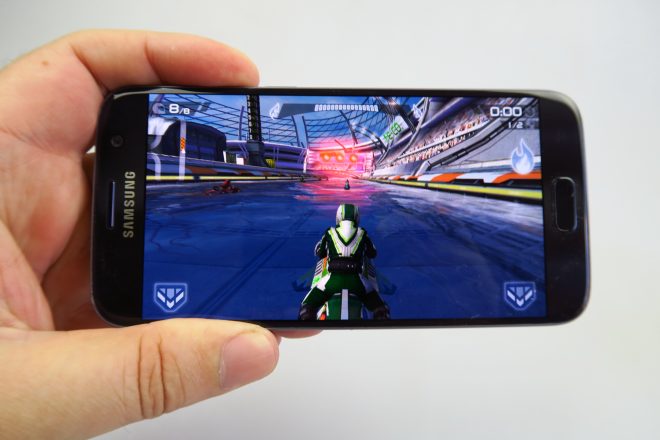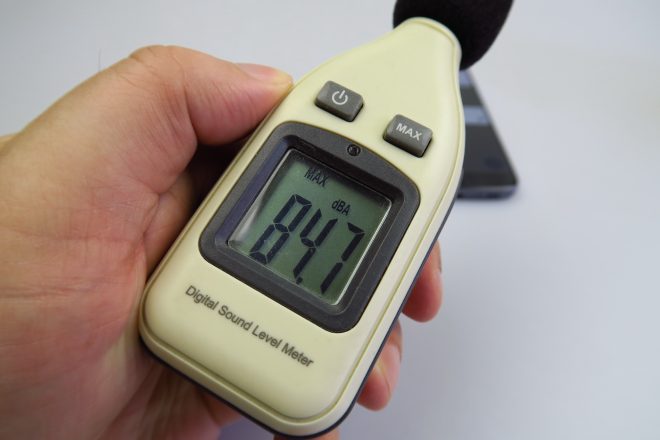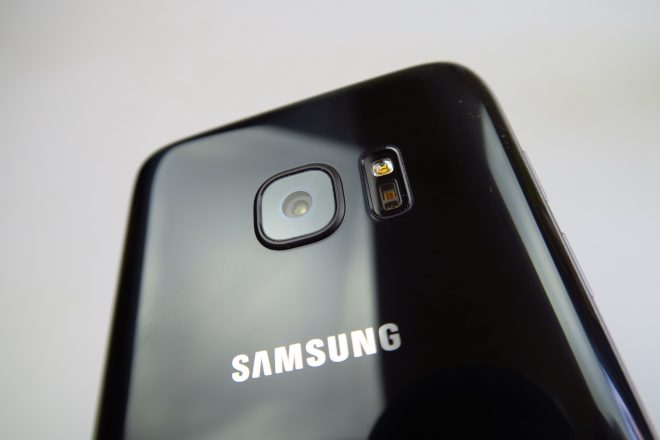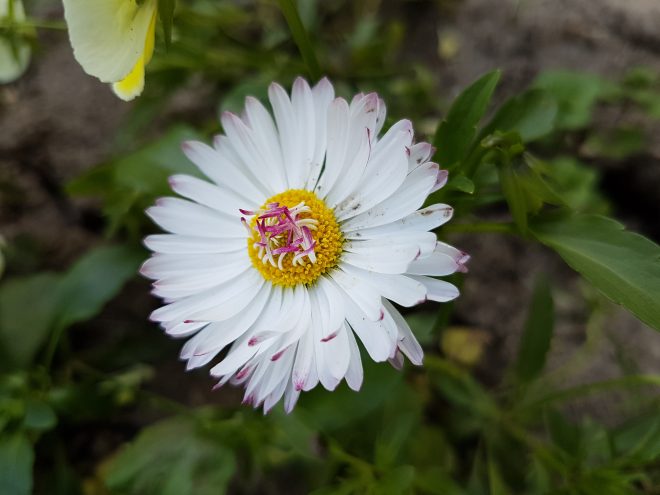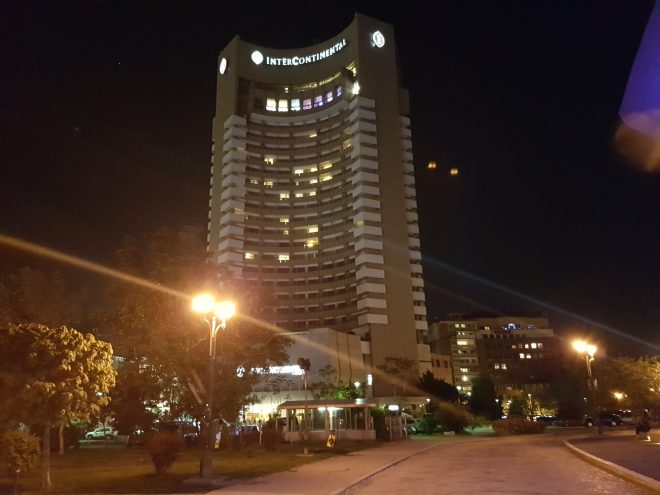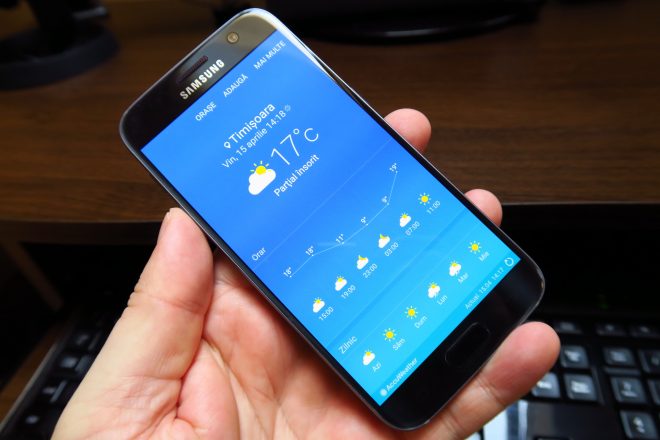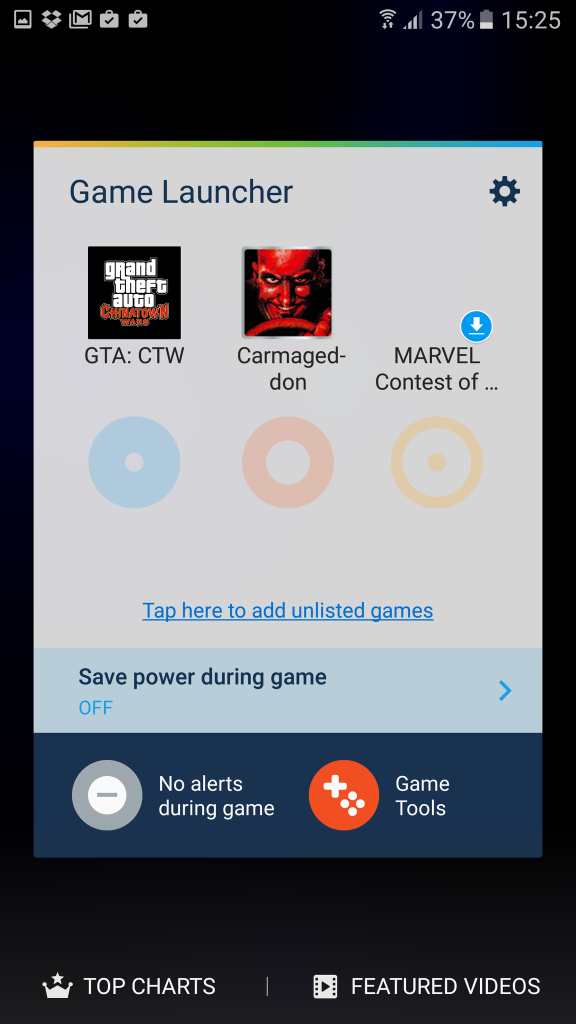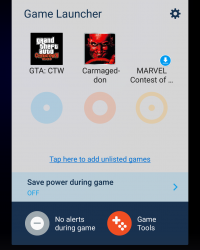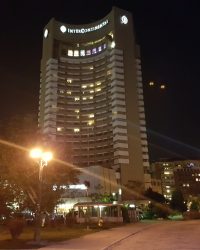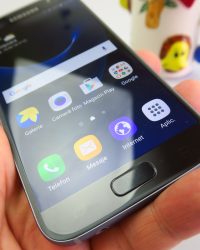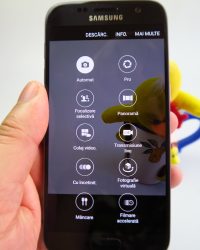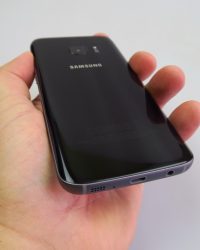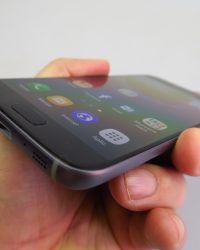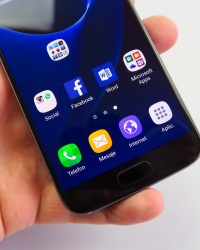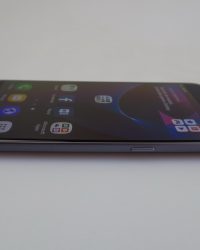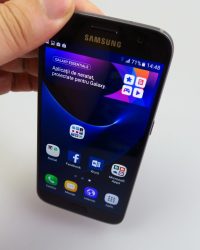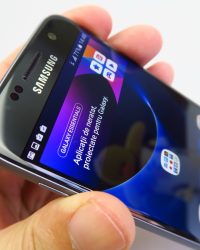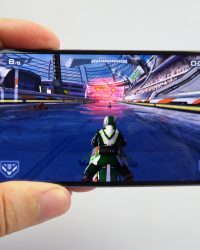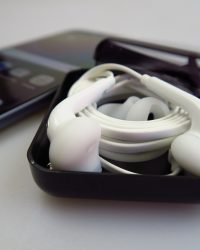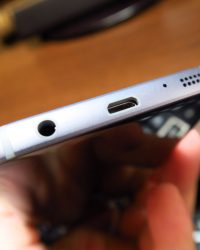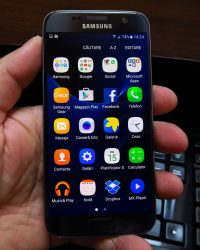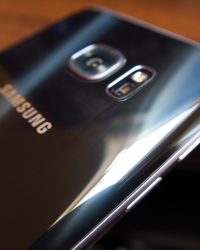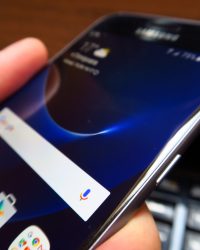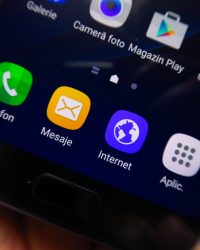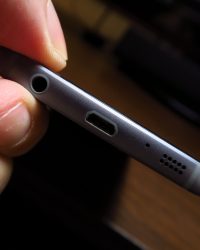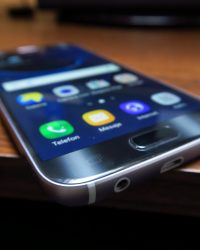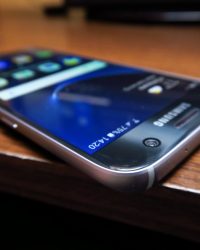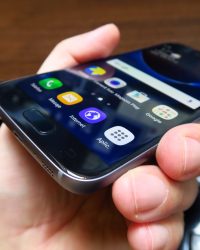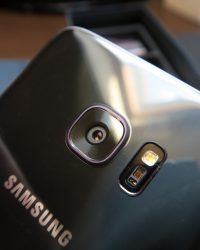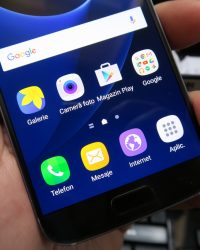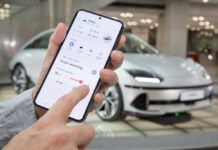Samsung Galaxy S7 can’t be reviewed without being compared to the Galaxy S6 and that’s what we did obsessively over the following lines. One can’t help it, since the S6 was the most innovative Galaxy S handset ever since the S4 maybe. Anyway, the 2016 flagship was announced at MWC 2016, together with the S7 Edge, that we already reviewed here. We’re dealing with a glass and metal smartphone, priced at $648 and detailed below.
We’re testing the Exynos-based model with 32 GB of storage and now it’s time to talk about the design. This phone has a glass and metal case, with a 3D curved glass back, in Galaxy Note 5 style, plus an aluminum frame, that’s now wider, for extra grip. At the front there’s a 2.5D glass panel, very gently curved to the sides, nowhere near as curved as the S7 Edge.
Galaxy S7 measures 7.9 mm in thickness and weighs 152 grams, making it thicker and heavier than the 6.8 mm/138 gram S6. In spite of that bulking up, you can’t actually feel it while using the device, luckily. The S7 Edge meanwhile was 7.7 mm thick and 157 grams, which pound per pound makes it more compact than the S7, considering the big diagonal.
Speaking of which, the S7 keeps the 5.1 inch diagonal from the S6 and has a more refined design, especially if you look at the top, bottom and corners. It’s elegant, solidly built, not very slippery, but still a fingerprint magnet. This time, the camera bulk is smaller and we also get IP68 certification, meaning the phone is waterproof and dustproof, with up to 1.5 meter water depth resilience for 30 minutes.
Buttons are comfy and one hand usage is a ball. The flagship comes in black, white, gold and silver and we’re digging its design, even when compared to the S6. Moving on to the hardware, we find a 5.1 inch Super AMOLED Quad HD display, pretty much the same panel that the S6 had. There’s no video player preinstalled, so we had to resort to the Gallery app for that role.
It features a Pop Up Play option, playback speed option and pinch to zoom. The viewing experience brought us fantastic colors, deep blacks, a bright image and great contrast. We also had wide view angles and a very crisp video overall. Pixels are embedded within the Diamond Pentile Matrix setup and then we procedeed to do a brightness test, achieving 451 LUX units indoors and 716 LUX with the brightness sensor exposed to a strong source of light.
These are excellent results and while we’re below the Galaxy S7 Edge’s 892 LUX and the S6 Edge’s 933 LUX, I’m sure that in full sunlight we beat 800 LUX. What’s sure is that we already surpassed the Galaxy Note 4 and iPhone 6S for example. Settings for the Display include Brightness, Font, Display Scaling, icon design, Smart Stay and Always On.
This feature lets you show the clock, calendar or an image on the locked screen in standby mode, only using about 1% of the battery per hour. Then there’s Screen Mode, letting you tweak saturation with options like Adaptive Display, AMOLED Cinema, AMOLED Photo and Basic.
This one is an excellent screen and we can’t really say anything bad about it, but in the end the S6 also had an excellent screen, so we can’t feel an evolution. Back to the hardware, the CPU on board of this handset is an Exynos Octa 8890, in the version we’re testing, but the Chinese, Japanese and US market get the phone with the powerful Snapdragon 820 CPU inside.
Our version get a Mali T880MP12 GPU and then there’s 4 GB of LPDDR4 RAM, 1 GB more than the S6, plus 32 or 64 GB of storage and a microSD card slot, which the predecessor didn’t sport. If you want to talk about performance, the Samsung Galaxy S7 has no lag, great performance and runs any game you’ll throw at it for the next 2 or 3 years at least. We played GTA on it, Carmageddon and didn’t register any problems.
In benchmarks we had great results, for example in Quadrant only being second to the S7 Edge, from all the phones we’ve tested. In AnTuTu 6.0 we’re third placed, following the Xiaomi Mi 5 and iPhone 6s Plus and in 3DMark we get the fourth spot. The jump in performance from the Galaxy S6 is felt in these benchmarks, but not in every day use.
We also tested the temperature, achieving 31.1 degrees Celsius after playing the game Riptide GP2 for 15 minutes and this makes the S7 one of the coolest phones we’ve ever tested. It’s probably due to the copper-based heatpipe inside. Now let’s talk acoustics!
We get a singular speaker at the bottom of the phone and there’s no music player preinstalled, so we had to resort to Google Play Music. Still, the Samsung equalizer is here, with genre presets, bass/treble and instrument/vocal knobs, as well as 7 channel/frequency sliders. There’s also an UHQ upscaler feature, Surround, Tube Amp and Concert Hall, plus more options.
The actual listening experience brought a loud and clear sound, great bass, no distortion and a good guitar rendering. The headphones are just like we left them last year, on the Note 5 and S6. They have the same design, they offer comfy buds, a big remote, tangling wire and great noise isolation. They also provide great voice and bass, plus they’re loud.
There’s no FM radio here, in case you were wondering. We did a decibelmeter test and achieved 84.7 dBA, which is a great result, even though the S6 got up to 89 dBA. Still, we beat the iPhone 6s Plus and Galaxy S7 Edge, so that’s nice. Now let’s talk about the camera.
Everything feels very familiar, because we already reviewed the Galaxy S7 Edge. We get a 12 megapixel camera, compared to the S6 16 megapixel shooter, but this time we get bigger pixels with 1.4 micron size, compared to last year’s 1.12 microns. The aperture is now F/1.7, compared to the 2016 F/1.9. We also get PDAF and there are two versions of the camera: Sony sensor and Samsung sensor.
The Sony one is the IMX260 sensor and the Samsung one is the S5K2L1, which we have actually. Samsung promoted the camera through the Dual Pixel technology, a piece of tech also available on DSLRs. Each pixel has two photo diodes, that can be read independently during focus, but also together. Optical image stabilization is included as well, plus a single LED flash.
Upfront there’s a 5 megapixel shooter with F/1.7 aperture too. The camera starts up fast, picture taking is also fast and the focus is very, very fast. Zoom is fluid and the UI is 95% the same as we left it on the Galaxy Note 5 and Galaxy S6. There’s Effects, HDR, Timer, Flash options and resolution settings (12 MP In 4:3 and 9.1 MP in 16:9).
You can also set the video capture resolution to 4K, Quad HD, or Full HD in 30 or 60 FPS. We also have a Motion Photo feature, similar to Apple’s Live Photos, Tracking Autofocus and video stabilization, plus RAW capture. The capture modes are as follows: Auto, Selective Focus, Panorama, Video Collage, Live Broadcast, Slow Motion, Virtual Shot, Food and Hyperlapse.
The Pro mode offers the following features: focus, white balance, ISO, shutter (from 1/24.000th part of a second to 10 seconds), exposure, autofocus and metering. We did a series of photos during a very sunny day and generated 200+ photos. Those include great closeups and a very wide panorama, with a resolution of 23.920 x 2112 pixels.
The selfies were OK, but they weren’t more impressive than the ones on the Galaxy S6. When it comes to the core of the photo capture, we registered realistic colors, good texture and oversaturation every once in a while. We also felt that some of the shots were oversaturated at somes and oversharpened, plus a bit artificial-looking. The HDR capture we took was good, with a proper dynamic range for the situation and it truly pulled out of the shades a darker portion of a shot, but also make the sky burnt.
Closeups were perfect and you have that shot of a flower here to prove my point. We zoomed into landscape shots on the PC, after taking them and we didn’t lose many details, which is quite nice. The sky tends to look a bit unrealistic here and I mean its hue. I also feel that the hue of green is not as well perceived by the S7 sensor as I’d like it to be.
We’re nitpicking because we felt the S6 didn’t have all these problems and we want 100% quality and color rendering. Speaking of zooming, if you zoom at about 50%, you should keep quality, but more than that and you risk some blur. Focus play is a wonder and you can choose any number of subjects in a range of a few dozen centimeters and you’ll alternative between them in a giffy by tapping the screen and focusing on them.
I can’t say I was very impressed by the shots the S7 took in areas with more shade. Overall, the day time shots of this model are very good, but they lack the “wow factor” that the Galaxy S6 and S6 Edge brought on last year. There are some aspects where the S6 is still champion and I don’t remember it suffering from oversharpening or oversaturation at any time.
When it comes to low light capture (gallery here), we get some very big and long street light halos and generally OK brightness and clarity in shots. We played with the shutter speed and at some point slightly overexposed some shots. The flash is great, although it does manage to burn closeup subjects at times. I find the low light selfie to be a bit poor, compared to the Xiaomi Mi 5 for example.
Distance shots will find blur happening in the background, but one thing that’s guaranteed by the S7 at night is brightness above all rivals. Indoor shots are very nice, crisp and clear and the artificial lighting has no influence on the quality of the images. Food texture also is caught pretty nicely. In spite of all that praise and getting so much light, I feel that the Huawei Mate 8 is still the low light champion.
Video capture was done in Full HD at 30 FPS and 16 Mbps first, with some quality loss when zooming into those ducks. We also did a FHD 60 FPS capture with 28 Mbps bitrate and registered great focus and stabilization. The 4K clip was downright perfect, color-wise, brightness wise and incredibly crisp. It had a bitrate of 50 Mbps.
Optical image stabilization was tested by us on two sets of stairs and it was fantastic, beating 99% of all smartphones on the market right now, if not all of them. The microphone was good, with a nifty extra bass added to voices and autofocus was amazingly fast, the fastest in the business to be honest. Manual focus was also very fast and there’s no Android phone to contest that.
Sadly, the low light video capture involved big light halos, some grain and while there was no focus loss, some parts of it were too blurry to stomach. It’s still a brighter filming than the one of the Huawei P9 and Xiaomi Mi 5 for example. Great video overall, just not at night. So, we’re done with the camera, so it’s time to talk about the browser.
This browser has an OK speed, good benchmark results and we also came in contact with a comfy keyboard. On the connectivity front, there’s WiFi 802.11 a/b/g/n/ac, Bluetooth 4.2, ANT+, microUSB 2.0, NFC, GPS and Glonass, as well as LTE Category 12 or 13. A nano SIM slot is the key to access all of those and the calls here were loud and got a boost via the Extra Volume Mode (for noisy areas).
They registered great quality and a loud volume, plus good clarity. Speedtest showed a value of 25 Mbps in download and the same value in upload via WiFi router. We then proceeded to test the battery, a 3000 mAh unit, that’s an upgrade from the Galaxy S6’s 2550 mAh model. The video playback time was excellent, at 13 hours and 41 minutes, surpassing the Galaxy S6’s 9 hours and 49 minutes.
We’re still below the Galaxy S7 Edge and its 15 hours and 15 minutes, though. In PCMark, the test that simulates continuous usage, we reached 8 hours and 2 minutes, which goes past the 7 hours and 6 minutes of the Galaxy S6 and also beats the Xiaomi Mi 5, but scores below the S7 Edge’s 9 hours and 17 minutes. Charging is done in 1 hour and 52 minutes and there’s also wireless charging support.
S7 Edge juiced up faster (1 hour and 33 minutes) and don’t even get me talking about the crazy good time of the S6 (1 hour and 10 minutes). Settings of the battery include Power Saving Mode and Ultra Power Saving, the ultra familiar ones we already know from the predecessors. Overall, a great battery and now let’s talk software.
Samsung Galaxy S7 runs Android 6.0.1 with the latest TouchWiz on top. There’s Flipboard as an optional homescreen and the UI includes colorful icons with vivid pictograms and also abstract ones. Pinching the screen, results in accessing the widgets area (good looking and glossy), as well as Themes, Wallpapers and Screen Grid. Multitasking is still a vertical 3D carousel and it also triggers the split screen mode for compatible apps.
You can operate two apps on two halves of the screen and transfer text and pictures between them. The dropdown area features Quick Settings and notifications, while actual Settings includes a Smart Manager, Do Not Disturb feature and Advanced Features. Those are one handed operation, pop up view gesture (minimize any window and move it around), Smart Capture and Direct Call.
There are also the Game Launcher and Game Tools, that let you record gaming sessions from the device, including a video capture of your face, like PewDiePie, thanks to the front camera. There are also DND features, Power Save features and capacitive button deactivation during game here. The fingerprint scanner has a rather slow setup, allows web sign in, but it’s fast and accurate.
We counted 36 preinstalled apps, a pretty OK number, meaning there’s no bloatware here. It’s certainly a cut from the Galaxy S7. S Health is on the list, as usual with a pulse scanner that doesn’t make me happy, because of being inaccurate, plus the ability to count steps, measure O2 sat and more. Then there’s the Galaxy Apps store, Microsoft apps (Word, Excel, Powerpoint) and S Planner, plus Memo. And now that we’re done with the review, let’s see the verdict.
Here are the Pros:
- good looking and premium phone
- refined design even compared to the Galaxy S6
- bright screen
- powerful hardware
- waterproof and microSD card slot are welcome bonuses
- good audio
- good camera, but not the best
- great video capture and OIS
- very good battery
- bright pictures in low light conditions
And the Cons:
- fingerprint magnet of a case
- inferior to the Galaxy S6 in some camera areas
- underwhelming low light video capture
- charging could be shorter
- useless pulse scanner
- long fingerprint scanner setup
- no FM radio
- not a big upgrade from the S6 overall
The Samsung Galaxy S7 is a great phone overall, but it has to live in the shadow of the Galaxy S6, that was a monument of a phone. It was actually accompanied by 3 other kickass phones from Samsung, Note 5, S6 Edge and S6 Edge+ and all of them bring extras that make you think twice about buying the S7. It’s still a hugely powerful smartphone, with a very good battery and camera, especially when it comes to lighting.
However, if you own one of the 4 Samsung flagships from last year, it’s not time for an upgrade. If you have the S5 or Note 4, go right ahead!




